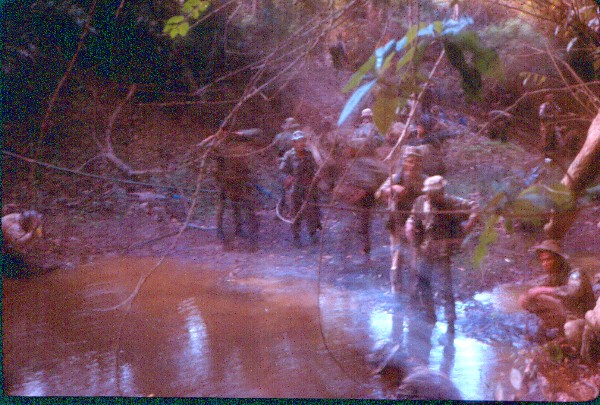Answer by Arnold Punaro, Author of On War and Politics: The Battlefield Inside Washington’s Beltway, Vietnam War veteran, USMC, former Staff Director of SASC, businessman, on Quora.
What surprised me about Vietnam was how wet and cold you were all the time due to the monsoon rains. My unit operated in the Que Son Mountains and it got very cold at night and we did not have warm enough sleeping gear.
We also were exposed to Agent Orange but did not at the time know what it was or how harmful it would be. I recall on Christmas Even 1969 stopping and digging in for the night on the side of a mountain. Due to the rain and mudslides we ended up sliding down to the bottom of a B-52 bomb crater and the troops asked, “Lt., what is that orange color in the water?” I just thought it was mud making the water orange. It was of course Agent Orange, and we ended up sleeping in it that night. Only later did we realize the harmful effects of Agent Orange. I’ve gone to far too many funerals of fellow troops with Agent Orange-related diseases in recent years, a common problem for Vietnam-era vets.
One of the worst problems we had was with how unreliable resupply was. And some basic items, like dry socks and heat tabs, were never in supply. Most all of our chow was C-rations that came in brown cans and ran from horrible to inedible. Even worse, there were never any heat tabs to warm up the meals, so you had a cold “meat” dish with all the congealed fat and junk. We finally started using pinches of C-4 plastic explosive to heat our food and coffee, but you had to be really careful with that since it was an explosive.
Since resupply never had any dry socks, immersion foot, or “jungle rot,” became a major problem. In some cases, Marines had to be medevac’d for cellulitis. We were issued a truly worthless jungle boot. The boot was heavy: it had a steel plate which was supposed to stop the booby trap pungi sticks (but didn’t). And its “weep holes,” which were supposed to let water drain out got clogged constantly, and with the monsoon rains and trudging through rice paddies, our feet were constantly soaking wet. I had my troops cut holes in the top of their boots so the water would slosh out. Very unsatisfactory.
We really did not have any contact with what we called “the real world” back home. No Internet; no radios for news or music in the jungle; no papers; we lost track of time and the days of the weeks and even months. It’s a very surreal experience to lose track of time like that and just have your platoon, patrolling the jungle, day in and day out.
This question originally appeared on Quora. - the knowledge sharing network where compelling questions are answered by people with unique insights. You can follow Quora on Twitter, Facebook, and Google+.

 Plus they did use a fair amount of fuel.
Plus they did use a fair amount of fuel.